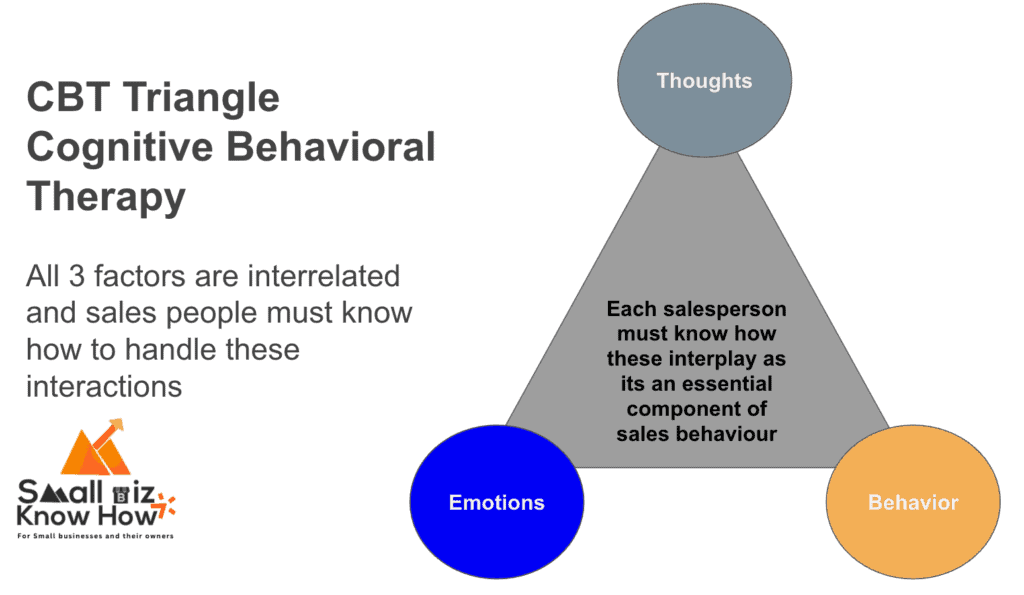In the realm of small business sales, cold calling often gets a mixed reception. Yet, having honed my expertise in sales strategies for over a decade, I can assertively underline the potency and relevance of cold calling in today’s competitive market.
Cold calling is the essential component of any cold outreach efforts that you do as a business.
For many, the term “cold calling” conjures images of outdated phone pitches and uninterested recipients. However, when executed with precision and preparation, cold calling transcends its old-school stereotype, proving itself as a dynamic tool in a small business’s arsenal.
This guide demystifies the strategic nuances of cold calling, providing you with a practical blueprint to engage potential clients effectively. We’ll explore why seasoned sales professionals still lean on cold calling, dissect real-life examples, and provide you with a robust template to refine your approach.
Whether you’re dialing into the B2B sphere or aiming to master your sales pitch, understanding the fundamentals of cold calling—highlighted by the ‘3 C’s’: Clarity, Conciseness, and Conviction—can dramatically enhance your sales efficacy.
Embrace this journey through the art of cold calling, where each call is not just about selling, but about learning, adapting, and ultimately succeeding in the ever-evolving dance of business communications.
Introduction to Cold Calling in Sales: Understanding the Basics

Embarking on the journey of mastering cold calling is akin to learning a nuanced dance; it’s both an art and a science.
When small businesses consider integrating cold calling into their sales strategies, it’s crucial to start with a robust understanding of the basic principles that underpin this traditional yet potent sales technique.
Cold calling, at its core, is about initiating a business conversation with a prospective customer who has no prior interaction with your brand or product.
It’s not a random dialing spree hoping to hit the jackpot. Instead, it’s a targeted, strategic approach aimed at opening doors and building new relationships.
Many small business owners mistakenly view cold calling as an outdated or intrusive technique. However, in reality, when executed with finesse and preparation, cold calling transcends these misconceptions, emerging as a dynamic tool capable of generating significant business opportunities.
The essence of cold calling is not about bombarding strangers with unsolicited pitches but about sparking interest and cultivating connections through genuine and purposeful dialogue.
Understanding the basics of cold calling involves recognizing its primary objective: to transition from an unsolicited call to a meaningful conversation that piques the interest of the potential client.
It’s about strategically navigating through that initial contact to establish trust and open a channel for future interactions. This process requires a mix of patience, persistence, and a deep understanding of your prospect’s needs and business context.
It’s also crucial to debunk a common myth: cold calling is not merely about making sales on the spot. Rather, it’s an exploratory mission to identify whether there’s a mutual fit and whether further discussions could be mutually beneficial.
Small businesses must approach cold calling with a mindset geared towards learning and adapting, not just selling.
By setting realistic expectations and preparing thoroughly, small businesses can harness the power of cold calling to expand their reach and solidify their market presence, all while maintaining the authenticity and personal touch that define their brand.
Why is Cold Calling Done by Sales Professionals?: The Key Reasons Behind the Strategy

Cold calling remains a staple in the toolkit of sales professionals for several compelling reasons, each serving strategic and practical purposes in the business development process.
Understanding why seasoned sales professionals persistently engage in cold calling unveils the method’s intrinsic value, particularly for small businesses aiming to carve out their niche in competitive markets.
- Direct Engagement: Cold calling enables sales professionals to directly engage with potential clients, cutting through the digital clutter that often dilutes the impact of online marketing efforts. This direct line of communication allows for immediate feedback and personal interaction, which are crucial for gauging interest and tailoring sales pitches.
- Lead Generation: At its core, cold calling is an effective lead generation tool. It allows sales teams to reach out to a broad array of potential customers, identifying and cultivating leads that are not yet on the company’s radar. This proactive approach is essential for businesses looking to expand their client base beyond their existing networks.
- Immediate Qualification of Prospects: Cold calling provides an opportunity for real-time qualification of prospects. Sales professionals can quickly ascertain whether there’s a fit between the prospect’s needs and the company’s offerings. This direct interaction saves time and resources that might otherwise be spent pursuing less promising leads.
- Building Relationships: Despite its name, cold calling can warm up potential clients to a business. By initiating conversations, sales professionals start relationships that could blossom into future sales, partnerships, or referrals. Each call, even those that don’t convert, increases the visibility of the business and humanizes the brand.
- Learning and Adaptation: Cold calling is a dynamic learning tool. Sales professionals gather insights about market needs, competitor offerings, and potential objections through these direct conversations. This invaluable feedback loop informs business strategies, marketing messages, and product development.
Cold calling, when approached with a well-defined strategy and executed with personal integrity, transcends its traditional boundaries.
It transforms from a mere sales tactic into a strategic asset that fuels business growth, enhances market understanding, and solidifies customer relationships.
Basically, for small businesses, mastering the art of cold calling is not just about making more calls; it’s about making each call count towards building a sustainable and respected business presence.
What is Cold Calling Examples?: Real-Life Scenarios to Illustrate the Technique

As a business professional specializing in a lead discovery SaaS product designed for small businesses, I often find myself explaining the real essence of cold calling through concrete examples.
Let me take you through a scenario that encapsulates the strategic execution of cold calling, illustrating how this approach can open doors and create opportunities.
Imagine it’s a typical Tuesday morning. I start by researching potential small businesses that could benefit from our SaaS product—a tool that streamlines and enhances the process of discovering and managing sales leads.
After identifying a promising prospect, a small digital marketing agency, I prepare for the cold call. This preparation is crucial; it involves understanding the prospect’s business model, current market challenges, and potential needs that align with our product.
The Call Initiation: I dial the number and am greeted by the prospect. “Good morning, this is Me from LeadGen Solutions. I understand you’re in the middle of your day, and I appreciate a few minutes of your time. We’ve noticed many digital agencies struggle with lead management and I believe I might have something that could help. Do you have a moment to discuss this?”
Engagement: Assuming the prospect agrees to continue, I avoid launching directly into a sales pitch. Instead, I focus on building rapport and understanding their current challenges. “I see from your website and recent campaigns that you’re actively expanding into new markets. Managing and converting leads in such a dynamic environment can be quite challenging. What has your experience been with your current tools?”
Illustrating the Solution: Once the conversation naturally steers towards the difficulties they face, I introduce our SaaS product as a potential solution. “Many of our clients were facing similar challenges, feeling that their lead management systems were either too clunky or not insightful enough.
Our tool simplifies this by integrating directly with your existing platforms, providing real-time data and actionable insights, allowing you to focus more on strategy and less on manual tasks. Would you be interested in seeing how it works in a brief demo?”
Setting the Next Steps: If the prospect shows interest, I propose a follow-up. “How about we schedule a quick demo for later this week? I can show you how our tool not only saves time but also increases the accuracy of your lead qualification process. What does your schedule look like this Thursday?”
This scenario exemplifies the essence of cold calling—it’s not just about making a sale but about starting a conversation that could lead to a meaningful business relationship.
Each call is a step towards understanding the prospect’s needs and positioning our product as a viable solution, ultimately aiming to make their business operations more efficient and effective.
Best Cold Calling Strategy: How to Plan for Success in Sales Calls
Crafting the best cold calling strategy is akin to preparing for a well-orchestrated performance where every detail counts towards the final outcome. Based on the insights I have gained from experience, the most effective strategies are those that are meticulously planned, combining psychological readiness with tactical precision.
Preparation is Key: The initial step in a successful cold calling strategy is thorough preparation. Understanding the target market and individual prospects is crucial. This means researching the business, its industry challenges, and potential needs that your product or service can meet. As highlighted in the guide, having a deep understanding of your prospect’s context improves the relevance of the conversation and increases the likelihood of engagement.
Scripting with Flexibility: While having a script might seem rigid, a well-crafted script serves as a roadmap for the call and ensures that all key points are covered. However, the mastery lies in using this script flexibly—adapting the conversation flow as you respond to the prospect’s cues and concerns. This approach allows for authenticity and responsiveness, which are critical in establishing rapport.
Timing and Persistence: Data from the guide emphasizes the importance of timing. Making calls at strategic times, such as Monday mornings or Friday afternoons, can increase pick-up rates since these are times less targeted by other sales professionals. Persistence is also crucial. The average cold call might only last 80 seconds, but it’s important to remember that persistence pays off. Regular follow-ups and maintaining a schedule for calls can significantly improve success rates.
Psychological Readiness: Confronting and managing call anxiety is essential. The guide suggests techniques like cognitive behavioral therapy (CBT) methods to control the impact of negative thoughts and emotions. Practicing courage, despite fears, by making calls regularly helps build confidence over time.
Engagement Techniques: Successful cold calling strategies also involve mastering the first 20 seconds of the call. Using permission-based openers and engaging with a friendly, confident tone can set a positive stage for the rest of the conversation.
Incorporating these elements into your cold calling strategy transforms your approach from merely making calls to making connections that count. Each call becomes an opportunity to learn and refine your technique, building towards greater effectiveness and success in your sales initiatives.
Cold Calling Strategy Template: A Step-by-Step Framework

When crafting a cold calling strategy, having a structured template can dramatically increase your effectiveness and confidence on the phone.
Let’s walk through a step-by-step framework, using the sale of a lead generation SaaS product as our key example.
This framework, inspired by proven practices, will guide you from preparation to execution with the goal of securing a meeting.
Step 1: Research and Preparation Before you even think about picking up the phone, ensure you know who you are calling. Understand their business, the challenges they might face, and how your lead gen SaaS product can address these challenges. For instance, if the target is a small marketing firm, recognize how they could benefit from better lead segmentation and automation features offered by your product.
Step 2: Crafting Your Opening Your opening should be brief, respectful of the prospect’s time, and open-ended enough to gauge interest.
Begin with: “Good morning/afternoon, is this [Prospect’s Name]? Hi [Prospect’s Name], this is [Your Name] from [Your Company]. I’ve noticed that many marketing firms face challenges with lead management, and I think you might find our solutions quite impactful. Do you have a moment to discuss this?”
Step 3: Building Rapport Quickly establish rapport by mentioning a relatable fact or a brief commendation of their work. This shows you have done your homework and are genuinely interested in their success, not just in making a sale.
Step 4: Engage with Relevant Questions Instead of launching into a sales pitch, engage the prospect with questions that allow them to talk about their needs or challenges. For example: “I understand that handling multiple client campaigns can be quite overwhelming without the right tools. How are you currently managing your lead generation and customer segmentation?”
Step 5: Listen Actively Listening is perhaps more important than talking in cold calling. Pay attention to the prospect’s pain points and prepare to align your product’s features as solutions to these issues.
Step 6: Present Your Solution Once you identify a specific challenge they mention, introduce your product as a solution: “It sounds like managing lead quality is a big concern. Our SaaS platform automates lead categorization and helps prioritize efforts on high-value prospects, potentially increasing your conversion rates significantly. Would you be interested in seeing how this works in a live demo?”
Step 7: Handle Objections Gracefully Be prepared for objections or hesitations. Address these concerns directly, reassuring the prospect of the value and support your product provides.
Step 8: Closing the Call If the conversation goes well, move towards setting up a more formal meeting or demo. Suggest a specific time and date: “Based on what you’ve shared, I believe a quick demo could really show the potential impact on your workflow. How does your schedule look this Thursday afternoon for a 20-minute walkthrough?”
Step 9: Follow-Up After the call, send a thank you email summarizing the key points discussed and confirming the next steps. This not only shows professionalism but also reinforces the details and commitment from both sides.
By following this structured approach, you transform cold calls from dreaded tasks into strategic opportunities for growth. Remember, each call is a step towards refining your technique and understanding your market better. Always be learning, adapting, and most importantly, connecting on a human level.
Cold Calling Techniques (That Really Work) Summary: Enhancing Your Approach

Using effective techniques not only enhances the chance of success but also builds a foundation for strong, lasting business relationships.
Let’s dive into a conversation between a salesperson, Sam, and a cold prospect, Alex, who runs a manufacturing business specializing in custom ceramic ware.
I have curated this conversation based on many of the call recordings that I have listened to over the past many years.
This call demonstrates key cold calling techniques that align with insights from the “Cold Calling Mastery” guide.
The Conversation:
Sam: “Good morning, is this Alex?”
Alex: “Yes, this is Alex. How can I help you today?”
Sam: “Hi Alex, I’m Sam from LeadGenTech. I came across your business online and was really impressed by your innovative designs in ceramic ware. I was curious to see if you’re exploring ways to streamline your customer inquiries and lead management processes?”
Alex: “Actually, yes, we’ve been thinking about how we can better manage our customer leads. What do you have in mind?”
Sam: “That’s great to hear, Alex. Many of our clients in the manufacturing sector have found our tool helpful in organizing and prioritizing customer inquiries, especially those that are most likely to convert into sales. It automates much of the initial contact and follow-up, freeing up your team to focus on creating beautiful pieces. Would it be okay if I ask a few questions about how you currently handle your inquiries?”
Alex: “Sure, go ahead.”
Sam: “Great, Alex! To start with, could you tell me how you currently manage incoming queries from potential customers? Are they funneled through a specific platform or process?”
Alex: “Well, most of our leads come through our website and social media, but it’s all a bit disorganized. We try to keep track manually, which can be overwhelming at times.”
Sam: “I see, that sounds quite challenging. Our tool, LeadGenTech, could help streamline these inquiries into a single platform, offering you visibility and control over each lead. It even integrates with social media. How does your team follow up on these leads currently?”
Alex: “We usually do follow-ups through emails or calls when we find the time. There’s no real system in place, it’s pretty ad hoc.”
Sam: “That’s exactly what LeadGenTech is designed to improve. By automating follow-ups and prioritizing leads based on their engagement, you won’t miss out on potential sales. Would you be open to a demo to see how it could specifically help your business?”
Alex: “I’m not sure, Sam. We’re swamped with orders right now, and I don’t know if we can fit this in. Plus, I need to discuss this with my partner before making any decisions.”
/Welcome to the typical objections raised by your prospect/ See how Sam handles it
Sam: “Absolutely, Alex, I completely understand how busy you must be. What we’ve found is that just a 30-minute demo could actually save you hours each week down the line, potentially speeding up how you handle orders. How about we schedule something tentative, and if it doesn’t work out, we can easily reschedule? I believe this could really make a difference for your business.”
Alex: “Okay, that could work. But it would have to be later in the week.”
Sam: “Of course, I’ll make sure it’s convenient for you. How does Friday afternoon sound? If we need to adjust closer to the date, we can do that.”
Alex: “Friday afternoon could work. Send me an invite and I’ll confirm with my partner.”
Sam: “Perfect, I’ll send that right over. And I’ll include some brief info in the invite that you can share with your partner. We’re looking forward to showing you how LeadGenTech can streamline your lead management.”
Why This Cold Call Conversation Works:
- Personalized Approach: Sam tailors the conversation based on Alex’s specific business model and needs, showing an understanding of the industry.
- Active Listening and Response: Sam listens to Alex’s pain points and immediately aligns the features of the product as direct solutions to these issues.
- Handling Objections: Sam anticipates and respects Alex’s hesitation regarding time constraints and decision-making, offering flexibility. He uses the strategy of scheduling a tentative meeting which lowers the commitment barrier for Alex.
- Persistence and Reassurance: Sam doesn’t back down at the first sign of resistance; instead, he reassures Alex of the benefits and adapts to his availability, maintaining a polite and professional stance.
- Closing with Confirmation: By confirming the meeting and agreeing to send a calendar invite, Sam ensures that both parties have a mutual understanding and agreement on the next steps.
This conversation exemplifies effective cold calling by combining research, personalization, active listening, and strategic handling of objections—all aimed at advancing to the next step in the sales process.
What Are the 3 C’s of Cold Calling?: Core Elements for Effective Calls
The 3 C’s of cold calling—Clarity, Conciseness, and Connection—are fundamental principles that guide effective cold calling strategies.
Let’s revisit the previous conversation between Sam and Alex to illustrate how these elements are seamlessly integrated into a successful cold call:
- Clarity:
- Sam was clear in his communication, especially when describing the features and benefits of the LeadGenTech SaaS product. He explained how it could streamline Alex’s current process of managing leads, ensuring that the value proposition was straightforward and easily understood. Clarity helps in minimizing misunderstandings and builds trust, as prospects can clearly see how the solution fits their needs.
- Conciseness:
- Throughout the conversation, Sam was concise. He provided just enough information to engage Alex without overwhelming him with unnecessary details. This is crucial in keeping the prospect engaged, particularly in a cold calling scenario where time is of the essence and attention spans may be short.
- Connection:
- Sam effectively created a connection with Alex by showing genuine interest in Alex’s business challenges and aligning the conversation around Alex’s specific needs. By personalizing his approach and acknowledging Alex’s busy schedule, Sam fostered a rapport that made Alex more receptive to the idea of a demo.
These 3 C’s—clarity, conciseness, and connection—are not just communication tactics; they are essential components that ensure the cold call is respectful, engaging, and focused on creating a meaningful dialogue that can lead to a business opportunity.
The First 20 Seconds of a Cold Call: What Do You Do?
In the crucial first 20 seconds of a cold call, your primary goal is to capture the prospect’s interest and set the tone for a productive conversation. Here’s how I approached this with Alex during our call:
As soon as Alex answered, I introduced myself with a friendly and confident tone, “Good morning, is this Alex? Hi Alex, I’m Sam from LeadGenTech.”
Instantly, I made sure to connect by acknowledging his business and mentioning something specific and positive about it, “I came across your business online and was really impressed by your innovative designs in ceramic ware.”
This approach accomplishes several key objectives in the first 20 seconds:
- Establishes Identity and Intent: Quickly stating who I am and where I’m calling from provides clarity and respect for the prospect’s time.
- Creates a Personal Connection: Commenting on Alex’s business shows that I’ve done my homework and am genuinely interested in his work, not just making a sales pitch.
- Engages Interest: By mentioning his business’s unique elements, I aim to engage Alex’s pride in his work and openness to hear how my solution could potentially add value.
This initial engagement is critical as it helps to break down the usual resistance to cold calls and paves the way for a more open and fluid conversation.
Is Cold Calling a Good Sales Strategy?: Evaluating its Effectiveness for Small Businesses
Cold calling remains a pivotal sales strategy for small businesses due to its direct approach and the ability to immediately gauge customer interest and response.
Despite the proliferation of digital marketing tools and social media platforms, cold calling offers a unique set of advantages that make it table stakes for most small businesses seeking to expand their market reach and customer base.
Why Cold Calling is Essential for Small Businesses:
- Direct Customer Engagement: Cold calling allows businesses to directly engage with potential customers, providing an immediate opportunity to explain products and services and to personalize the sales pitch based on the prospect’s responses.
- Rapid Feedback: It provides instant feedback from potential customers, which is crucial for small businesses that need to quickly adapt their strategies or offerings based on market demands.
- Lead Generation: Effective cold calling can fill the sales pipeline with leads that might not be reached through passive marketing strategies.
- Cost-Effective: For small businesses with limited marketing budgets, cold calling is a cost-effective method of outreach that doesn’t require the same financial investment as advertising campaigns or content marketing.
Data Points Indicating the Effectiveness of Cold Calling:
Let’s look at some fictional data points that illustrate the outcomes and responses from cold calling campaigns:
| Metric | Outcome |
|---|---|
| Initial Calls Made | 1,000 |
| Positive Responses | 150 (15%) |
| Follow-Up Meetings Set | 100 (10% of initial calls, 67% of positive responses) |
| Conversions | 25 (2.5% of initial calls, 17% of follow-up meetings) |
| Conversion Value | $50,000 (Average deal value of $2,000) |
Analysis of data points
- Positive Response Rate: 15% of the calls result in a positive response, suggesting an openness to the product or service being offered.
- Follow-Up Meeting Rate: 67% of those who responded positively are willing to engage in a more detailed discussion, indicating a strong potential for sales conversions.
- Conversion Rate: Of those who attended follow-up meetings, 17% converted into actual sales, demonstrating the efficacy of cold calling in generating quality leads that are more likely to purchase.
These data points underscore the importance of cold calling as a direct and effective sales strategy for small businesses.
The ability to directly influence and interact with potential customers, along with the relatively high conversion rates from direct engagements, makes cold calling a vital part of a holistic small business sales strategy.
Cold Call Strategy in Teaching: Educational Approaches to Training Sales Teams

Training sales teams in the art of cold calling is a crucial aspect for any business owner looking to enhance their team’s performance and overall business success. Using my learnings from working with sales teams and sales enablement teams, here’s how a business owner should approach teaching cold call strategies to their sales teams.
1. Emphasize the Fundamentals
Start by instilling a deep understanding of the basic principles of cold calling. This includes teaching about the objectives of cold calling, such as breaking the initial barriers, establishing a rapport, and identifying potential leads. Make sure your team understands that cold calling is not just about selling but about starting meaningful conversations.
2. Role-playing and Script Practice
Use role-playing exercises to simulate real-life scenarios. This practice helps sales reps get accustomed to various types of potential clients and situations. Provide scripts as a guideline but encourage customization based on the flow of conversation. This helps in building confidence and fluency in handling different responses from prospects.
3. Teach Techniques to Overcome Anxiety and Procrastination
Implement training sessions that include techniques to combat call reluctance, which is often mentioned in the document. Techniques like the CBT Triangle can help in understanding and managing the emotions and behaviors associated with anxiety and procrastination.
4. Feedback and Continuous Improvement
After role-playing sessions, provide constructive feedback. Highlight what was done well and discuss what could be improved. Encourage team members to critique each other’s approach in a constructive manner to foster a collaborative learning environment.
5. Monitoring and Coaching
Regularly monitor the calls made by team members, offering real-time coaching and advice. This could involve live listening to calls or reviewing recorded calls to provide specific, actionable feedback.
6. Incorporating Technology and Tools
Introduce your team to the latest tools and technologies that can aid in cold calling, such as CRM systems, auto-dialers, and call analytics software. Training in these tools ensures that sales reps are not only efficient but also have necessary data-driven insights at their disposal.
7. Developing Persistence and Resilience
Educate your team on the importance of persistence in cold calling. Using data from the document, explain that it often takes multiple calls to achieve a breakthrough, and immediate results are rare. Cultivate a mindset that values persistent effort and resilience, reinforcing that rejection is a natural part of the sales process.
8. Customization and Personalization
Teach sales reps the importance of customizing and personalizing calls based on the prospect’s background, industry, and potential needs. This involves doing homework before the calls and using the first few seconds of the call to demonstrate familiarity with the prospect’s challenges and context.
By focusing on these educational approaches, a business owner can effectively train their sales teams to not only be proficient in cold calling but to excel in creating opportunities that drive business growth. This structured and comprehensive training ensures that the sales team is well-equipped to handle the complexities and challenges of cold calling, turning potential prospects into valuable customers.
B2B Cold Calling Meaning: Understanding Business-to-Business Communications

B2B cold calling is a specialized form of outreach focused on establishing professional relationships between businesses.
Unlike B2C cold calling, which targets individual consumers, B2B cold calling aims to connect with other companies, often for longer-term and higher-value engagements.
This strategy is crucial for sales teams in industries where products or services are specifically designed for business clients, such as in manufacturing, software, or professional services.
The primary goal of B2B cold calling is to initiate conversations with decision-makers or influencers within targeted organizations.
These calls are typically more strategic and structured than consumer-focused calls because they deal with complex business needs and higher stakes decisions.
Sales professionals must demonstrate a deep understanding of the prospect’s business, industry challenges, and how their offering can add value.
Effective B2B cold calling requires thorough research, clear articulation of business benefits, and a professional demeanor.
It’s about starting a dialogue that explores potential problems the prospect is facing and positioning one’s own business as a solution, aiming to move the conversation towards more detailed discussions or demonstrations in follow-up meetings.
Cold Calling Tips – YouTube: Visual Learning for Improving Your Techniques
For small business owners and sales professionals looking to enhance their cold calling techniques through visual learning, YouTube offers a wealth of resources.
Here are a few recommended channels that provide valuable insights into effective cold calling strategies:
- Dan Lok: Dan is known for his straightforward and effective sales advice, often focusing on how to set yourself up for success at every step of the sales cycle. His videos cover a range of topics from communication skills to balancing work and personal relationships.
- Salesman.com (Will Barron): This channel is all about making selling simple. Will Barron provides tips and tricks, as well as interviews with leading sales and business experts, making it a great resource for practical sales advice.
- Patrick Dang: Patrick’s channel is perfect for those who want to learn while being entertained. He offers simple and effective techniques to boost cold calling and lead generation, and also provides insights into life as a Business Development Representative (BDR).
- Sales Insights Lab (Marc Wayshak): Marc provides free coaching and mentoring, using his data-driven and science-based sales methods. His videos cover sales psychology, cold calling tips, and mindset strategies.
- Jeffrey Gitomer’s Sales Training Channel: Known as the “King of Sales”, Jeffrey Gitomer offers no-nonsense advice on sales training. His channel is ideal for straightforward, practical sales guidance that cuts through the noise.
- Victor Antonio: With over 20 years of sales experience, Victor’s channel features a plethora of sales-related videos. His content covers everything from social media sales strategies to account-based marketing and pipeline management tips.
These channels are tailored to help improve various aspects of cold calling and sales techniques, from the very basics to more advanced strategies.
Whether you’re a newcomer to sales or looking to refine your skills, these YouTube channels provide accessible and expert advice to help you succeed in B2B cold calling.
During the Cold Call: How to Manage the Conversation

Managing a cold call effectively, especially when the conversation isn’t turning out favorably, is a skill that every salesperson needs to develop.
Drawing from the structured approaches outlined so far in the article, here are practical steps I follow to steer a cold call back on track:
1. Maintain Composure and Positivity Even if the call seems to be veering off course, it’s crucial to keep a calm and positive demeanor. Remember, your tone and attitude can greatly influence the direction of the conversation. Showing frustration or impatience will only solidify a negative outcome.
2. Listen Actively When a call isn’t going well, it’s often a signal that I need to spend more time listening. This means not just hearing the words but truly understanding the concerns or objections being raised. By doing so, I can better address the prospect’s specific issues and show that I value their input.
3. Address Concerns Directly If the prospect expresses doubts or objections, I tackle them head-on with informed responses. This involves acknowledging their concerns, providing clear, concise information, and sometimes even reiterating the benefits of the product or service in a way that aligns with their needs.
4. Ask Open-Ended Questions To regain control of the conversation, I use open-ended questions that encourage the prospect to talk more about their needs or challenges. This not only gives me valuable insights but also helps shift the focus of the conversation to creating solutions.
5. Pivot Strategically If resistance persists, I’m prepared to pivot the conversation tactfully. This might mean shifting the discussion to a different aspect of the product or service that may resonate more with the prospect or even suggesting a follow-up call if it seems they need more time to think.
6. Know When to Step Back Understanding when to end a call is as important as knowing how to conduct it. If despite all efforts the conversation isn’t productive, I politely suggest a follow-up at a later date, allowing some time for the prospect to consider the information provided and ensuring that the relationship remains positive.
7. Reflect and Learn Post-call, I reflect on what went well and what didn’t. This reflection is crucial for continuous improvement. I consider what could have been done differently and how to apply those lessons to future calls.
By applying these strategies, I ensure that even less favorable calls are handled professionally and constructively, turning potential challenges into opportunities for learning and growth.
Concluding Thoughts on Cold Calling Strategies: Building Confidence and Consistency
In wrapping up this article on cold calling strategies, it’s crucial to recognize that both confidence and consistency are the cornerstones of successful cold calling.
Confidence comes from knowledge and preparation; the more familiar you are with your product and the needs of your potential customers, the more effectively you can communicate.
Consistency, on the other hand, is about persistence and maintaining a steady, methodical approach to your calls, regardless of the varying outcomes.
Developing a robust cold calling strategy isn’t just about following a script; it’s about adapting to conversations in real-time, listening actively, and responding to the needs and concerns of potential clients.
It involves continuously refining your approach based on feedback and results, and never losing sight of the goal to build meaningful connections that could evolve into valuable business relationships.
Embrace each call as an opportunity to learn and improve. The more calls you make, the better you’ll understand the nuances of initiating and navigating conversations.
With each interaction, refine your approach, personalize your communication, and strive for clarity and conciseness.
By committing to these principles, you’ll build not only a successful cold calling strategy but also a resilient mindset that views every rejection as a step closer to your next success. Remember, cold call
